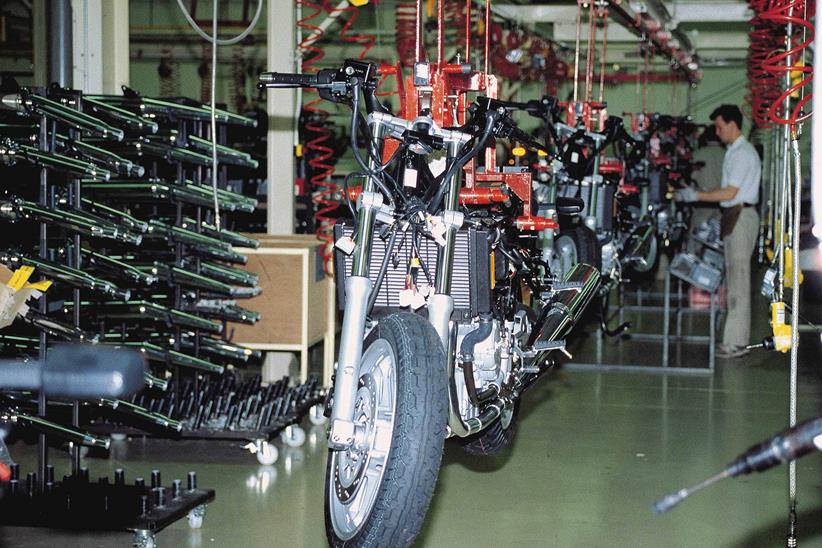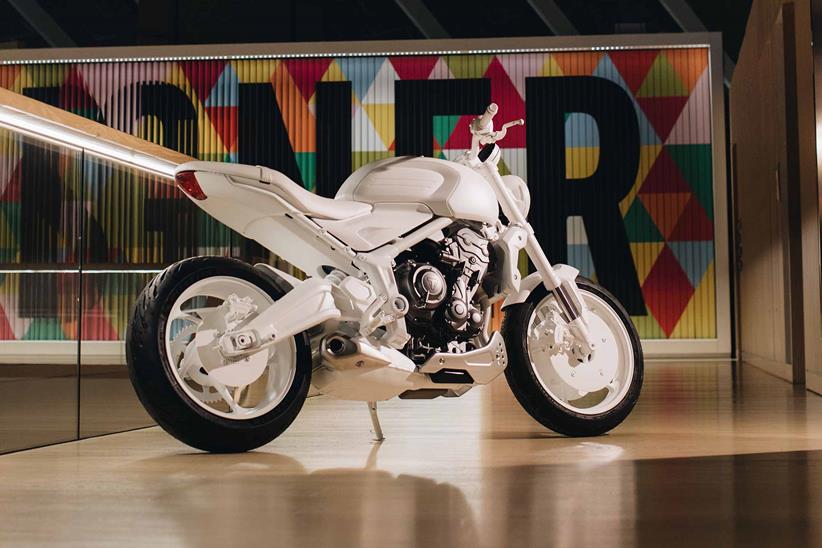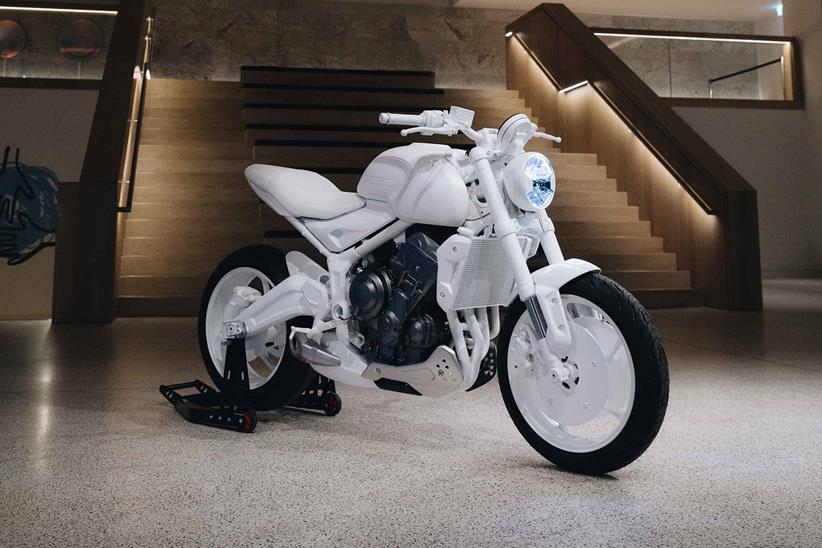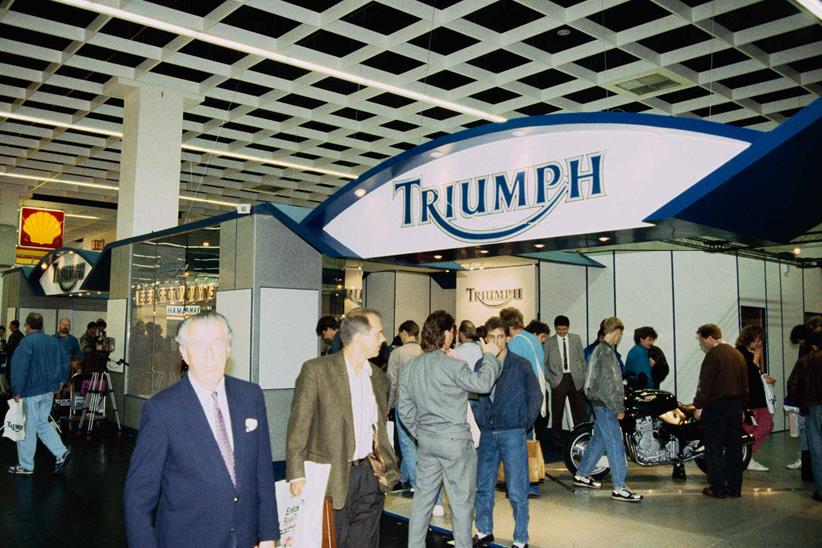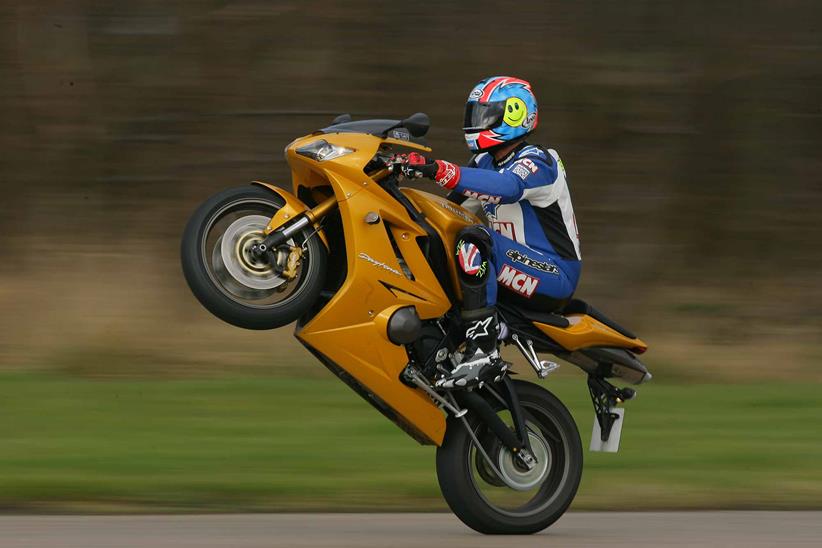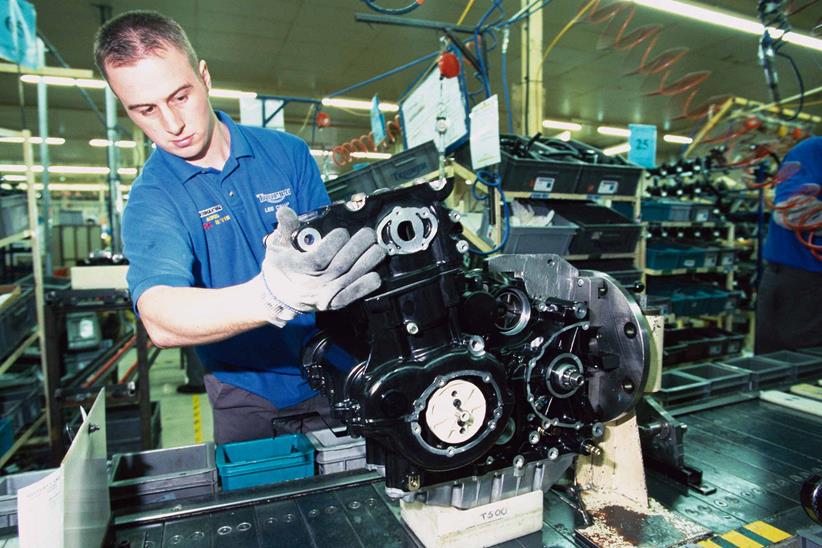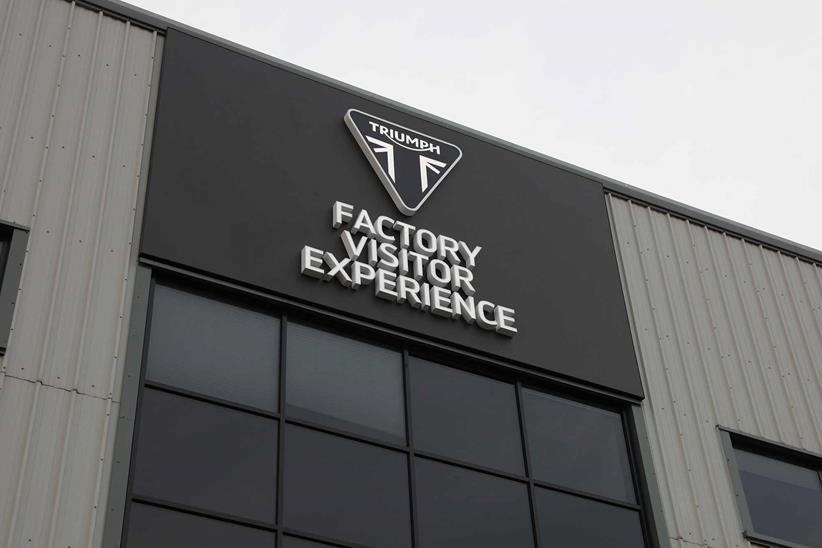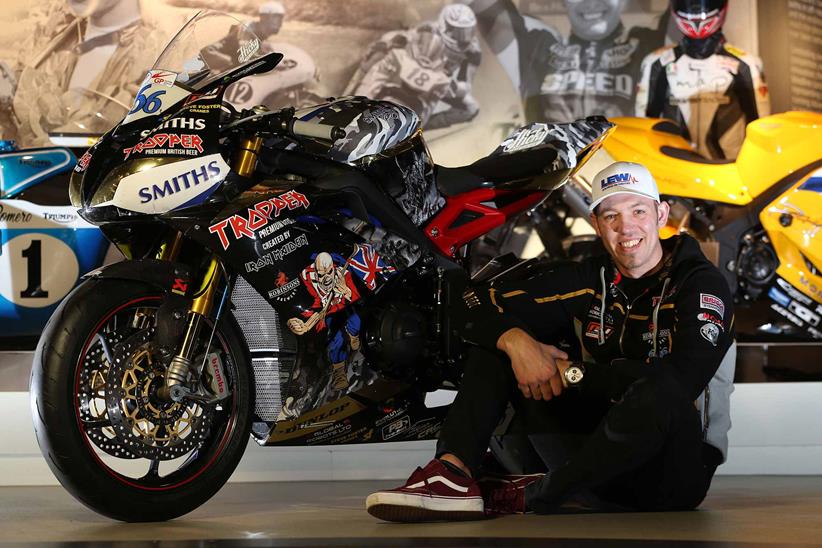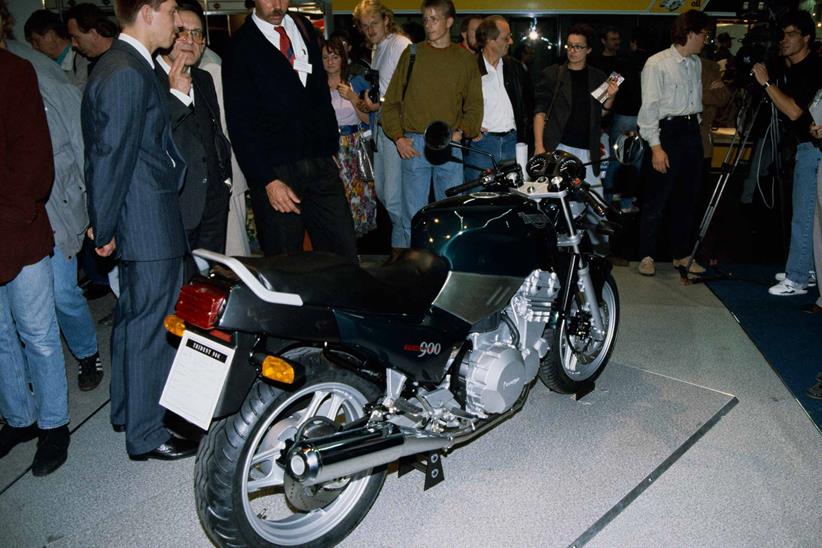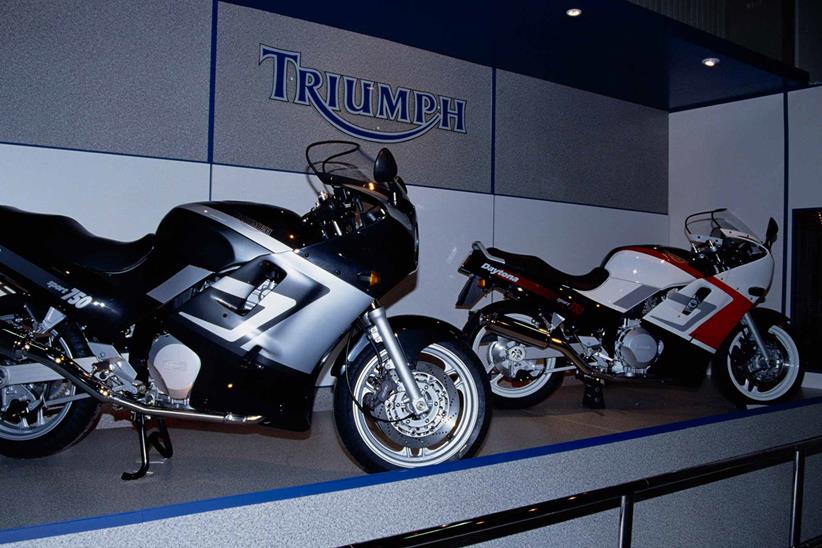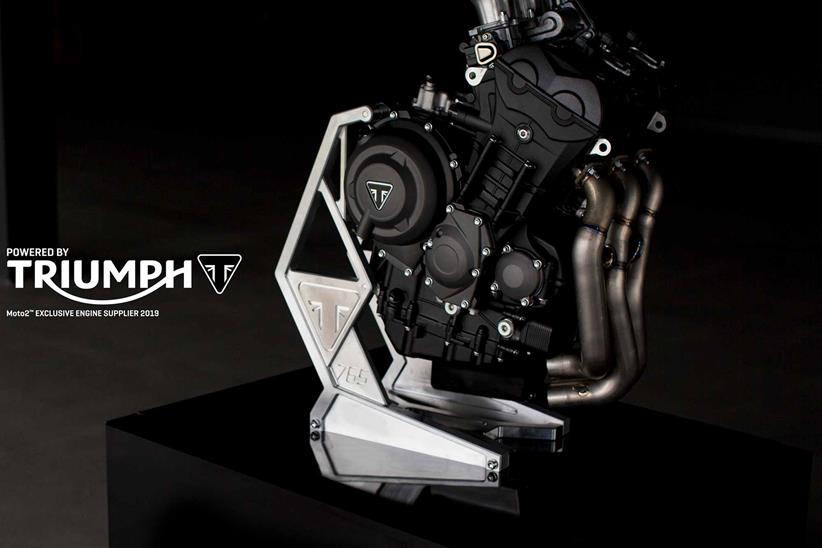30 years on: The story behind Triumph's rebirth
Thirty years ago this month, in September 1990, Triumph Motorcycles were reborn when, not one, not two, but SIX all-new Hinckley-built bikes were unveiled on the opening day of the Cologne Show in Germany.
It was the start of a golden era where the British motorcycle industry was once again ascendant and no longer the ailing embarrassment it had become in the 1970s and 1980s.
Related articles on MCN
- Two tribes go to war: The history behind the Honda SP-1
- 75 years of MV Agusta
- 40 years of the BMW GS
Although new Triumph’s initial production capacity was fewer than 10 bikes a day, the first machines were overly conservative and any kind of market dominance was a distant dream, they were also the first credible, competent and competitive mass-produced motorcycles built in Britain in over a generation.
Today, after three decades of growth, success and expansion, not forgetting one or two setbacks and cul-de-sacs, Triumph regularly produce 60,000 machines a year, higher than ever achieved at Meriden.
What’s more, Triumph motorcycles are ridden by James Bond and the British heir apparent; their engines grace grand prix by powering the Moto2 grid; their Bonneville family is the retro bike market leader and, best of all, the brand are once again mentioned in the same breath as BMW, Ducati and the Japanese ‘Big Four’.
![]()
A surprise return
All of that was simply unimaginable in the late 1980s and early 1990s. Back then the Japanese completely dominated motorcycling and had for more than 20 years. Generations of British bikers had instead been brought up on Suzukis and Yamahas and the remnants of the ‘old’ British industry had become such a laughing stock it tarnished and overshadowed the glory years of the 1950s and 1960s.
Which is why the story of Triumph’s resurgence and public reappearance in September of 1990 is all the more remarkable – especially as it almost never happened at all.
The sequence of events leading to the rebirth of Triumph began with the death of the ‘old Triumph’ seven years earlier. After its slow, under-resourced decline in the late 1960s and early 70s, in parallel with the rise of the Japanese and the UK industrial devastation of the decade including the ill-fated Meriden Co-operative, Triumph, the last real survivor of the previously world-leading British motorcycle industry, finally went into liquidation in October 1983.
![]()
John Bloor, then a 40-year-old self-made housing magnate, was one of the interested parties – but not in the Meriden factory site as many presume (that had already been sold to Tarmac Homes, would be demolished in 1984 then redeveloped for housing including Bonneville Close and Daytona Drive) – but in the motorcycle business itself.
“In the early 1980s I was watching the Japanese set up automobile plants in the UK to take advantage of currency exchange rates,” Bloor recalled in 2002 (Nissan’s Sunderland plant was built in 1984, Honda set up in Swindon in 1985 – Ed).
“And I thought the playing field might be getting more even for manufacturing things again in Britain.”
What happened next wasn’t considered significant or was widely reported at the time but was to prove a game-changer for British motorcycling. Ahead of interest from Claudio Castiglioni’s fledgling Cagiva and even Harley-Davidson, Bloor bought the Triumph brand and manufacturing rights from the official receiver. The price? Just £150,000.
![]()
Even more significant was what happened next, although by operating in secret and with very little reported Triumph news, very few people were aware of it for the next seven years.
First, immediately realising any successful Triumph rebirth would take significant time, Bloor straight away granted a licence, from November 28 1983, to Les Harris’s Racing Spares operation of Newton Abbot in Devon to allow him to continue building the old Meriden T140 Bonneville, mostly out of spares, so maintaining ‘unbroken’ Triumph motorcycle production. Harris went on to construct 1255 Bonnies up to 1988.
Secret development
![]()
But Bloor’s second move was equally foresighted. Operating from an industrial unit at nearby Bayton Road, Bedworth, he assembled a small team of designers and experts, some ex-Meriden, to develop his new motorcycle project. Although Bloor now owned the still-born Triumph ‘Diana’ engine design (a liquid-cooled, DOHC 900cc twin that, in prototype form had been shown by Triumph in March 1983 in a last-ditch attempt to attract investment), it was quickly rejected and his team looked elsewhere.
After visiting motorcycle factories around the world, particularly Japan and Europe, Bloor and his team came to the conclusion that a modern, multi-cylinder machine built to exacting hi-tech standards would be required to overcome Triumph’s somewhat tarnished reputation.
It was also decided that, to appeal as widely as possible and thus make mass production viable, not one, but a whole range of bikes would be developed. To do this they shrewdly adopted a modular approach, as is common in the car world, to produce a range of such machines as economically as possible.
![]()
The first engine, a 1200cc DOHC four, from which short-stroke and three-cylinder variants would ultimately deliver four engines and six models, was on the test bench by 1987. The following year, still in total secrecy, Bloor set up a parent company, ‘Bonneville Coventry Ltd’, changing its name to Triumph Motorcycles following the end of the Les Harris licence.
While that year, 1988, also saw construction begin on an all-new, state-of-the-art motorcycle factory on a 10-acre site in Jacknell Road, Hinckley. The price this time? A reported £80m, all out of Bloor’s personal pocket, although conveniently built by Bloor’s own company. Things were getting serious, although the motorcycling world was completely oblivious…
The big reveal
That all changed on June 29, 1990 when, out of the blue, a select group of British and overseas motorcycling journalists were summoned to Hinckley, Leicestershire. They could scarcely believe what they saw. Following a tour of the brand-new factory, complete with state of the art, computer-guided machinery including robots, they were then shown prototypes of an all-new 750cc three-cylinder roadster (later called the Trident) and a fully-faired three-cylinder sports tourer (later called the Trophy).
The then editor of Bike magazine, Mac McDiarmid, where this author was a green staff writer at the time, gave the story the cover in the following issue, reporting: “Triumph’s new operation is the biggest thing in British motorcycling for a quarter century.”
Bloor himself, meanwhile, in typical secretive style explained by wanting the machines to speak for themselves, stayed very much in the background, refusing to be photographed with ‘his’ bikes.
He was almost certainly right to do so. That year, the bikes were finished and unveiled in Cologne, the factory ramped up to begin production the following spring and key sales experts from Honda UK (Bruno Tagliaferri and Michael Lock, national and overseas sales managers respectively) were recruited. It was clear that Triumph meant business.
The first model was the Trophy 1200 in March of 1991 followed swiftly by the Daytona 1000 then the triples, the Trophy 900, Daytona 750 and Trident 900 and 750.
And although production started at just a handful of bikes a day, growth was rapid and evolution swift. By 1993 10,000 bikes had been built, a paint shop added and the range refined. The bland Daytona 750/1000 was replacedmwith a more characterful 900 and 1200, for example.
The popularity of adventure bikes led to the first Tiger, styled by the designer behind MCN’s long-running Sprocket cartoon, John Mockett. While the Speed Triple and Thunderbird saw Triumph start to find their new triple-based personality.
The next big step was the all-new T595 Daytona and T509 Speed Triple in 1997, again styled by Mockett, which saw Triumph become a credible superbike manufacturer. In 2000 came the first Bonneville. That year also saw Triumph turn its first profit, after an estimated £100m investment by Bloor.
Burning ambition
![]()
And although there have been hiccups and disappointments since – fire destroyed the original factory in 2002 while some models, such as the 1600 Thunderbird and 1200 Trophy were short lived – Triumph’s overall trajectory since then has been one of immense success.
With his son, Nick, CEO since 2011, Bloor retains 100% ownership of Triumph through its parent company Bloor Holdings Ltd. Bloor was awarded an OBE for services to the motorcycle industry in 1995 and the Royal Automobile Club’s rarely-given Diamond Jubilee Trophy in 2016, which was also the last time he spoke in public about the motorcycling company he brought back to life.
“From the outset we always intended to create bikes that combined traditional craftsmanship with innovation and our values as a company have never wavered. But any success as a company is always a reflection of the good people that it employs. We have a great team at Triumph with a genuine passion for everything we do. This award is a wonderful recognition of the care they invest in each bike.”
And now, 30 years after the first new Trident was revealed, Triumph have revealed the bike’s return as an all-new model for the masses.
Modular concept: The same, but different
![]()
A key element of new Triumph’s approach to design was what’s called the ‘modular concept’. This is where different models share a majority of common parts to reduce costs.
In Triumph’s case this proved to be a cost-effective way of producing a wide range of motorcycles. Engine design was key. Triumph’s new motor was designed to be either four or three cylinders with a long-or-short-stroke configuration but all with common pistons, cases etc. Head design was the same for all, featuring 2 x 32mm inlet valves and 2 x 28mm exhaust valves.
This resulted in 750 and 900cc triple and 1000 and 1200cc configurations. And as all these engines had same mounts, it meant the same tubular spine frame, alloy swingarm, fuel tank, rear bodywork, wheels and cycle parts could be used throughout, too.
The use of the same cycle parts and components also helped economies of scale when it came to purchasing. With no significant surviving UK motorcycle component industry in 1987 Triumph turned mostly to Japan – Kayaba for suspension, Nissin for brakes, Shin Nippon for wheels, Mikuni for carburettors, Nippon Denso for switchgear and so on.
Without the volume orders made possible by the modular system this would have been prohibitively expensive. Ironically, this modular approach was first suggested to then BSA-Triumph by Bert Hopwood in 1973, shortly before the original concern went bust…
